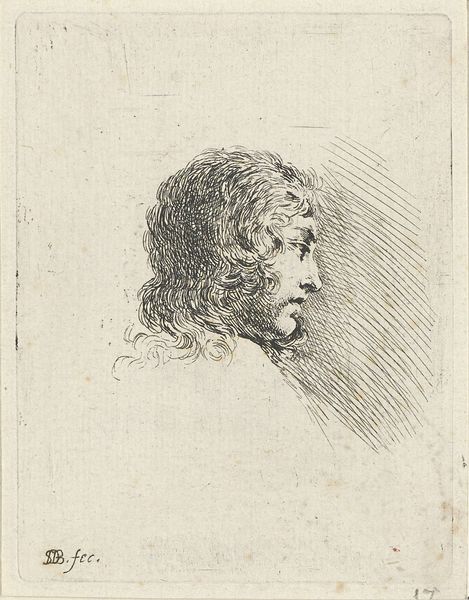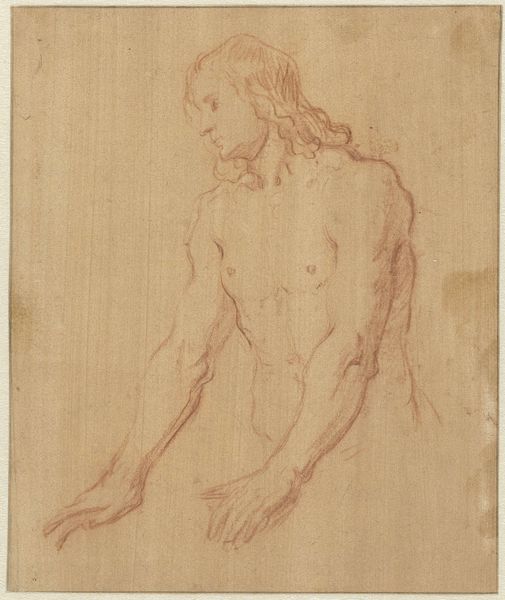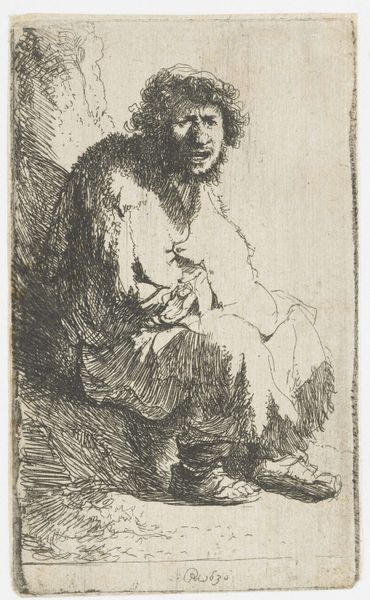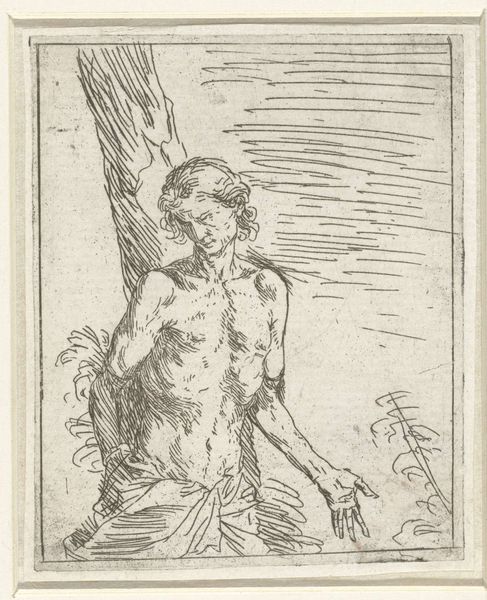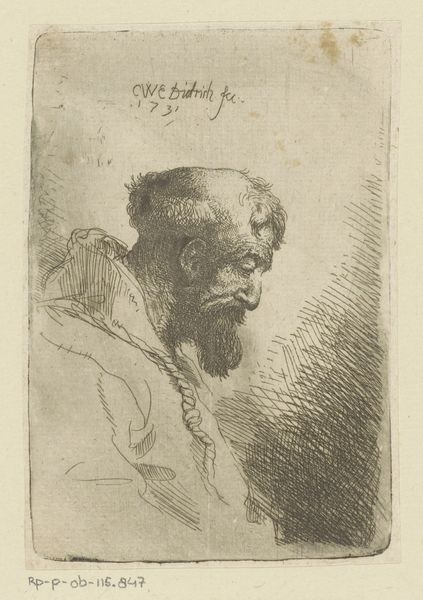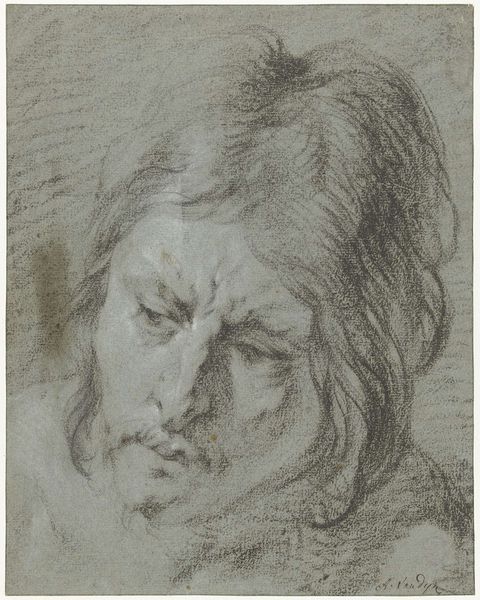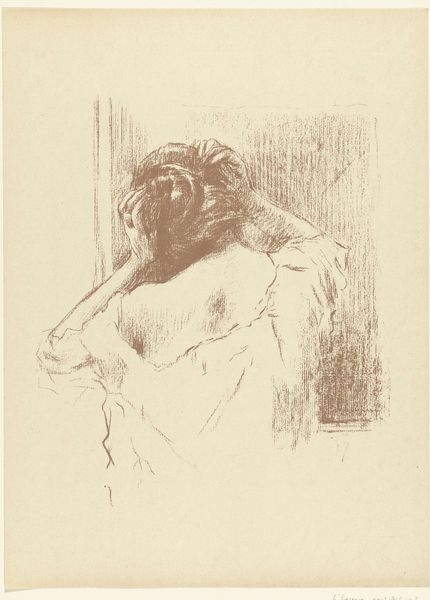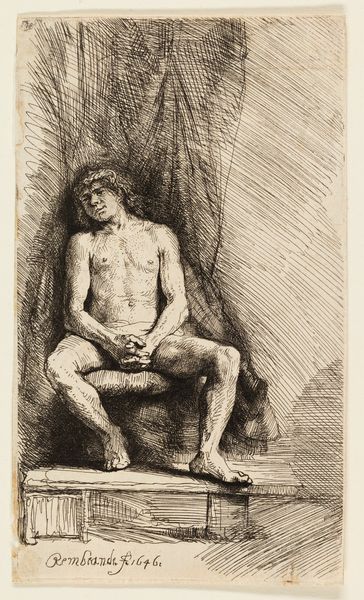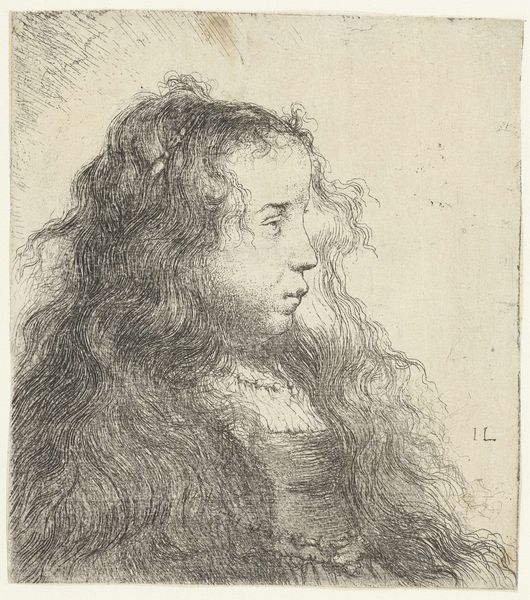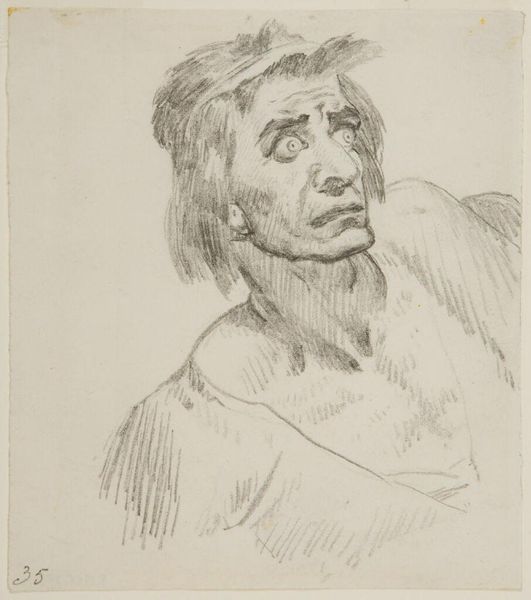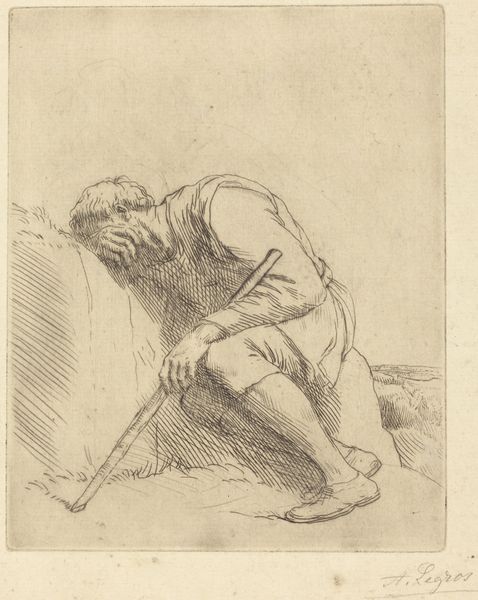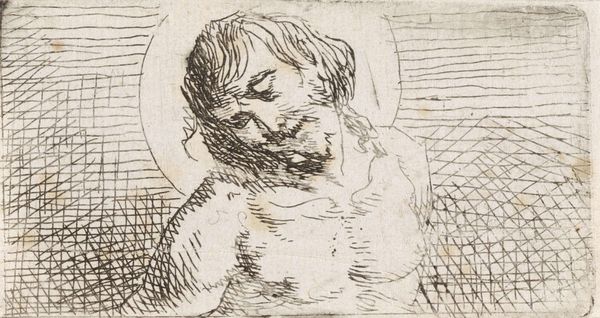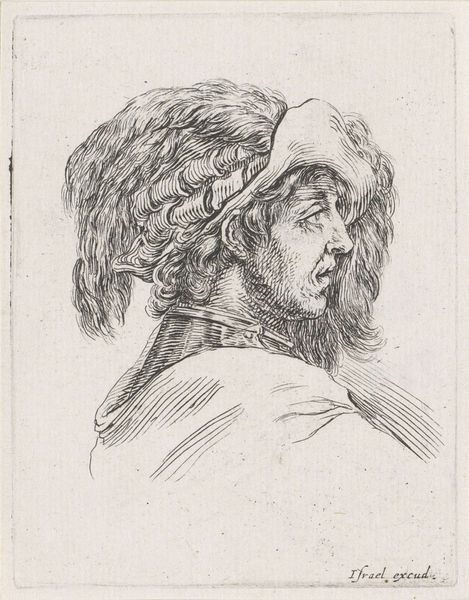
etching
#
portrait
#
baroque
#
etching
#
nude
#
realism
Dimensions: height 75 mm, width 61 mm
Copyright: Rijks Museum: Open Domain
Curator: Right, let’s consider “Bust of a Nude Man,” an etching dating sometime between 1625 and 1674, created by Jan Lievens, and housed right here at the Rijksmuseum. Stark, isn’t it? Editor: It feels...raw. All those scribbled lines, the rough texture... it's not idealized, that’s for sure. It evokes a kind of visceral vulnerability. Curator: Exactly! Lievens wasn’t aiming for some polished, classical ideal. He’s after something more… authentic. You know, etching allows for a real sense of immediacy. Look at the way he builds up shadow. It's all in the crosshatching. It suggests a deep interior life. The viewer feels like a fly on the wall in this intimate moment of the male sitter contemplating… something. Editor: Yes, all of the chaotic energy contained within these controlled outlines... it hints at an inner turbulence, almost. And his gaze... is he downcast, weary, or perhaps just deeply contemplative? I notice how his heavy hair feels both a covering, a form of anonymity. The hair of an early-century holy man almost, right? It speaks of hiding but also suggests depth, secrets, untapped power. Curator: Possibly, it’s the baroque sensibility—an embrace of the imperfect, the human. But the art is also realistic—there are lines on his forehead, an aged countenance. There is also beauty that remains there in the facial features that point toward former glory. It’s this intermingling between realistic depictions of humanity that renders this particular moment so captivating. Editor: The vulnerability of that exposed shoulder... it makes you wonder about power, doesn’t it? About strength and its performance? His apparent neglect seems an integral and conscious part of this male identity. A subtle protest, maybe? Or simply raw humanness made utterly compelling? Curator: And in that vulnerability, isn't there a different kind of power revealed? Perhaps power of the soul itself. Lievens invites us to confront it all. Editor: An insightful consideration to end on. And indeed, a testament to how visual imagery helps inform our cultural memory. It serves as an artifact and invites us to continue contemplating humanity’s multifaceted character through visual symbolism. Curator: Yes! As art always should. It’s a challenge, and this one, despite its modest size, offers a really outsized perspective on art.
Comments
No comments
Be the first to comment and join the conversation on the ultimate creative platform.
